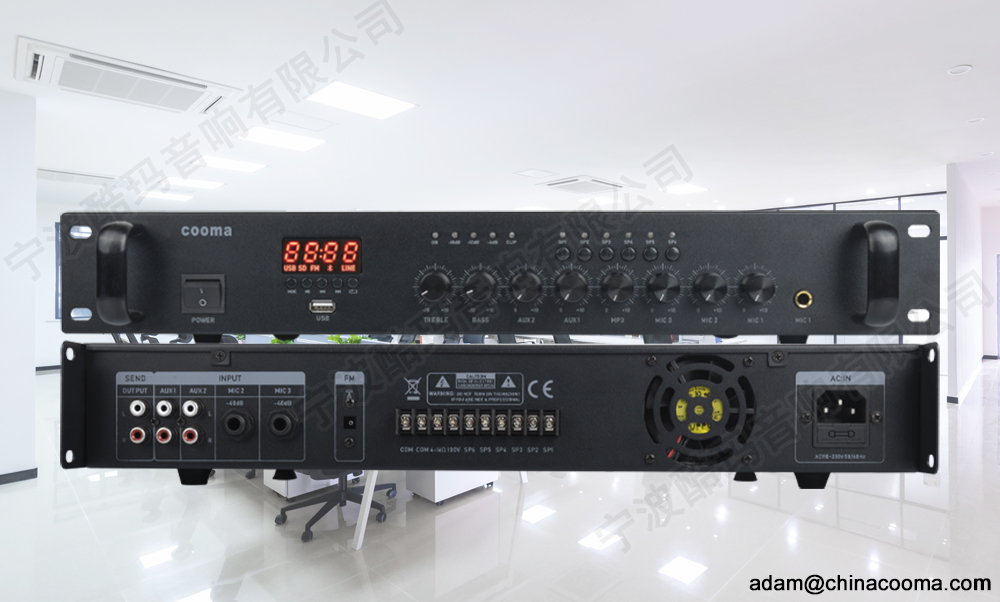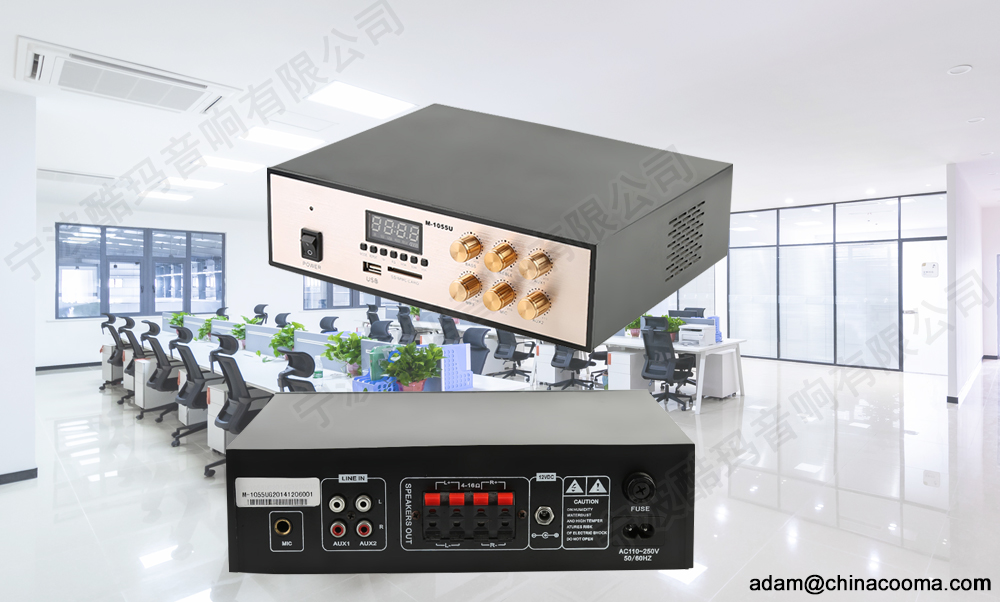First, the difference in output form:
Constant voltage and constant resistance are different from the output form:
- The constant voltage is not a certain voltage, but the output form is a constant voltage, it requires the rated voltage of the load. A constant voltage power amplifier is connected in parallel with multiple constant voltage speakers, as long as the total power does not exceed the total power of the constant voltage power amplifier.
- Constant resistance power amplifier requires a certain output load resistance. In a constant resistance power amplifier, if the load impedance changes, the power changes. An 8 ohm 100W fixed-resistance power amplifier with 4 ohm becomes close to 200W.
Two, the characteristics of constant pressure amplifier:
In a constant voltage power amplifier, if the rated load voltage changes, the power changes accordingly. 100V, 10W speaker connected to 70V becomes 5W (100V and 70V power difference twice).
Domestic standard of constant pressure is 120V, 240V foreign standard of constant pressure is 70V, 100V.
Three, the characteristics of constant resistance power amplifier:
Power amplifier with constant resistance output: This type of amplifier requires a constant impedance of the load. When the input signal is given, the output voltage varies greatly with the load.
Constant voltage output power amplifier: because the amplifier uses a deeper negative feedback device, the deep negative feedback amount is generally more than 10~20dB, so the output impedance of the amplifier is low, the load in a certain range of changes, the output voltage can still maintain a certain value, the sound quality can also remain unchanged.
Four, constant pressure power amplifier and constant resistance power amplifier application difference:
Constant pressure is used in large space where sound quality is not very high. On the contrary, constant resistance can only be transmitted within 100 meters due to transmission limitations, so it is generally used in small space when the sound effect is relatively better. General broadcast system uses constant voltage output, sound system uses constant resistance output.
- Constant voltage power amplifier, usually mono, is to convert the constant resistance into a constant voltage type output, in the range of power amplifier, can be connected to a number of constant voltage speakers, generally used in broadcasting background music system, (for example, supermarkets, schools, stations, parks and other places). Fixed-resistance power amplifier, usually multi-channel, two-channel is the most common, left and right stereo channel, also have 5.1 channel, to 2 to 8 euro output, (karaoke power amplifier, professional stage power amplifier, household power amplifier, etc.)
2 constant resistance power amplifier usually refers to the output impedance of 16 ohms below the power amplifier, also known as low resistance power amplifier, most of the double channel set above, the final output circuit to OTL, OCL, the output voltage is low, the current is large, the impedance of the load is also low. This kind of power amplifier has good sound quality but short transmission distance. Mainly used in family, KTV, conference hall.
- Fixed pressure amplifier (PA) is output with high voltage, output voltage is usually 100V (import), 120V, 240V, most of them are mono channel Settings, the final output is usually output transformer, the sound quality is a little bad, but the transmission distance is far, also called broadcast power amplifier. Widely used in troops, railway stations, wharves, schools, shopping malls and so on.
Power amplifier labeling: constant voltage labeling is the output power and output voltage, constant resistance labeling is the output power and output impedance.




